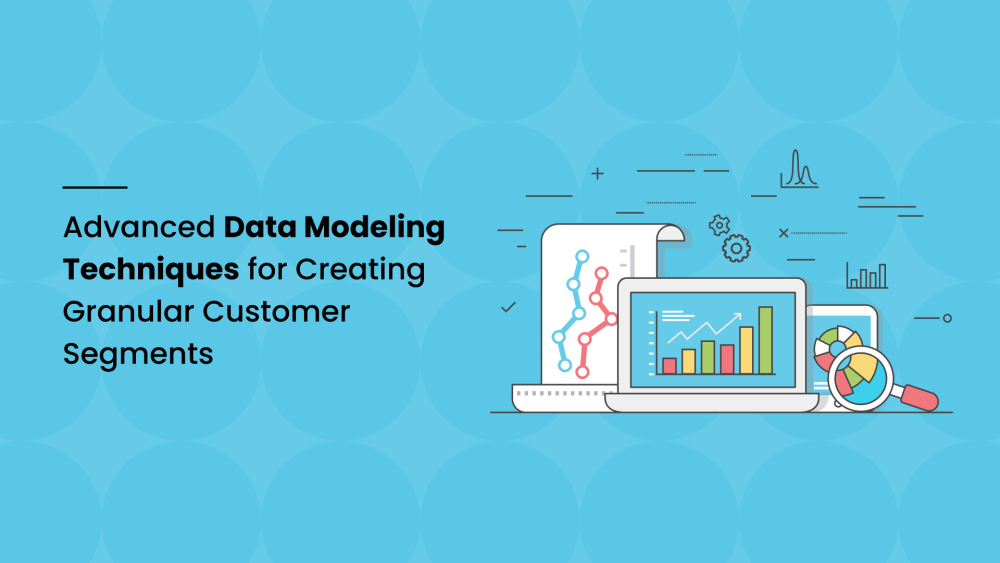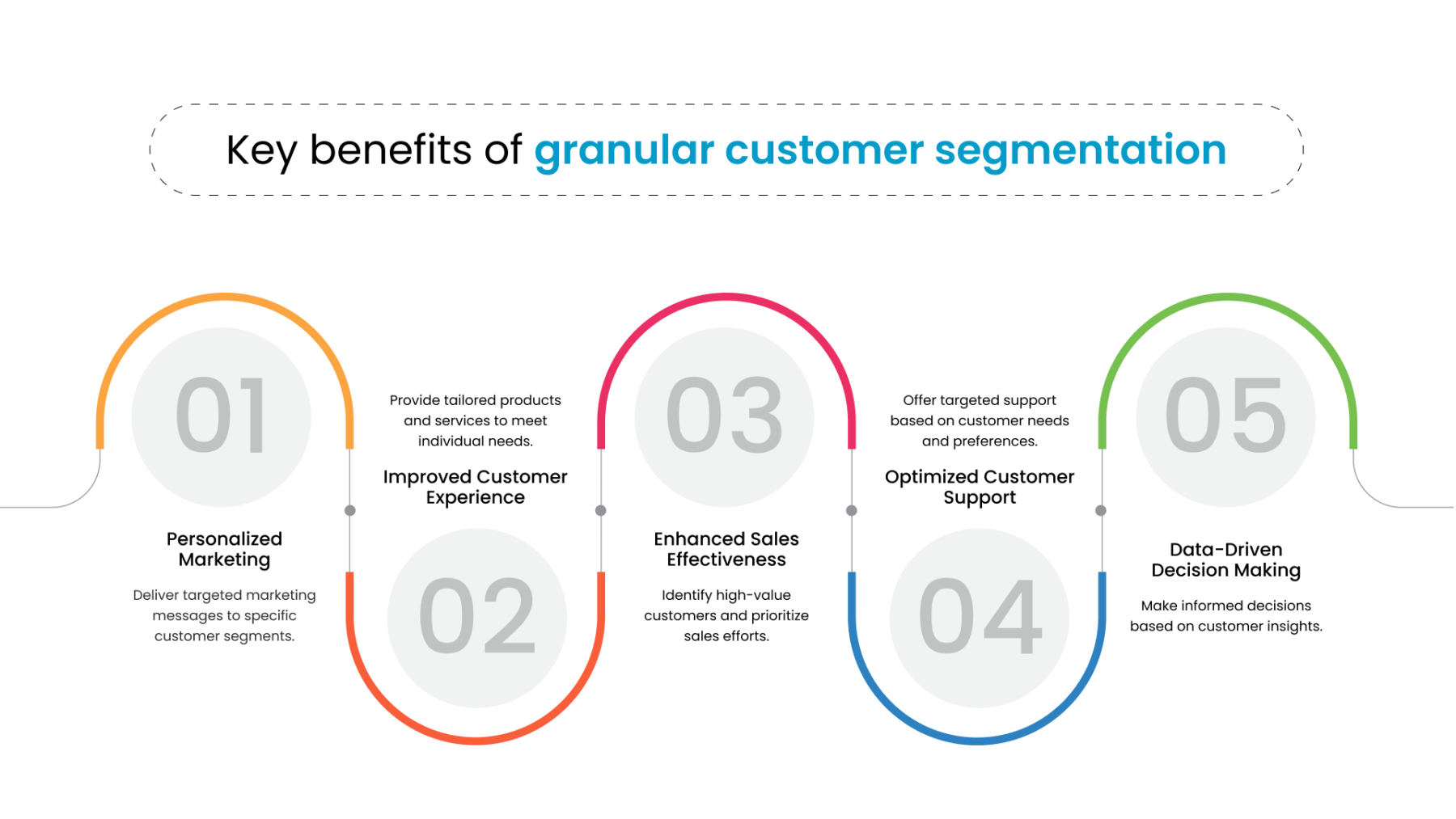In today's data-driven world, understanding and segmenting customers is crucial for businesses to deliver personalized experiences and drive growth. Advanced data modeling techniques enable organizations to create highly granular customer segments, enabling targeted marketing campaigns, product recommendations, and customer support. This blog explores some of the key techniques and tools for creating granular customer segments.
Understanding Customer Segmentation
Customer segmentation is the process of dividing a customer base into groups with similar characteristics. This allows businesses to tailor their marketing and sales efforts to specific segments, leading to increased customer satisfaction and higher conversion rates.
Key benefits of granular customer segmentation:
-
Personalized Marketing: Deliver targeted marketing messages to specific customer segments.
-
Improved Customer Experience: Provide tailored products and services to meet individual needs.
-
Enhanced Sales Effectiveness: Identify high-value customers and prioritize sales efforts.
-
Optimized Customer Support: Offer targeted support based on customer needs and preferences.
-
Data-Driven Decision Making: Make informed decisions based on customer insights.
Advanced Data Modeling Techniques
-
RFM Analysis:
-
Recency: How recently a customer has made a purchase.
-
Frequency: How often a customer makes purchases.
-
Monetary Value: How much a customer spends. By analyzing these three dimensions, businesses can identify high-value customers and tailor marketing campaigns accordingly.
-
Clustering:
-
Group customers based on similarities in their behavior, demographics, or preferences.
-
Popular clustering algorithms include K-means, hierarchical clustering, and DBSCAN.
-
Machine Learning:
-
Utilize machine learning algorithms to identify complex patterns and relationships in customer data.
-
Techniques like decision trees, random forests, and neural networks can be used to create highly accurate customer segments.
-
Predictive Modeling:
-
Predict future customer behavior, such as purchase likelihood or churn risk.
-
Use predictive models to identify high-value customers and target them with personalized offers.
Tools and Technologies for Data Modeling
-
Data Warehouses and Data Lakes: Centralized repositories for storing and managing large volumes of data.
-
Data Integration Tools: Extract, transform, and load (ETL) data from various sources.
-
Data Mining Tools: Analyze large datasets to discover patterns and insights.
-
Machine Learning Frameworks: TensorFlow, PyTorch, and scikit-learn for building and training machine learning models.
-
Business Intelligence Tools: Tableau, Power BI, and Looker for data visualization and analysis.
Best Practices for Data Modeling
-
Data Quality: Ensure data accuracy and completeness to avoid misleading insights.
-
Data Privacy and Security: Protect customer data and comply with relevant regulations.
-
Continuous Improvement: Regularly review and refine data models to adapt to changing customer behavior and business needs.
-
Collaboration: Foster collaboration between data scientists, analysts, and business stakeholders.
-
Ethical Considerations: Use data ethically and responsibly to avoid bias and discrimination.
Challenges and Considerations
-
Data Complexity: Dealing with large and complex datasets can be challenging.
-
Data Quality Issues: Inaccurate or incomplete data can lead to misleading insights.
-
Model Complexity: Developing and maintaining complex models requires specialized skills.
-
Computational Resources: Advanced data modeling techniques can be computationally intensive.
Conclusion
Advanced data modeling techniques, combined with powerful tools and technologies, enable organizations to gain deep insights into customer behavior and preferences. By creating granular customer segments, businesses can deliver personalized experiences, increase customer satisfaction, and drive revenue growth.
How Techwize Can Help
Techwize, with its expertise in data analytics and machine learning, can help organizations implement advanced data modeling techniques:
-
Data Engineering: Design and implement data pipelines to extract, transform, and load data.
-
Data Modeling: Develop effective data models to support business analysis and decision-making.
-
Machine Learning and AI: Build and deploy machine learning models to gain valuable insights.
-
Data Visualization: Create interactive dashboards and visualizations to communicate insights effectively.
-
Training and Support: Provide training and ongoing support to your team.
By partnering with Techwize, you can leverage the power of data to drive business growth and innovation.



